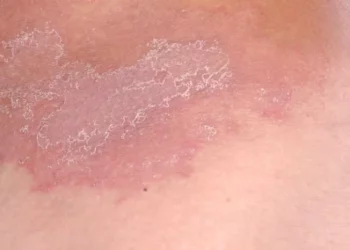Ringworm, despite its name, is not caused by a worm but by a fungal infection. This common condition, also known as dermatophytosis, manifests as a circular rash with raised edges and can affect various parts of the body, including the scalp, feet, groin, and body. While ringworm is usually not serious, it can be uncomfortable and unsightly. Fortunately, numerous antifungal creams are available to treat ringworm effectively. However, selecting the appropriate antifungal cream requires careful consideration of several factors, including the type and severity of the infection, the individual’s medical history, and any potential side effects of the medication.
Understanding Ringworm and its Treatment
Before delving into the selection of antifungal creams, it is essential to understand the nature of ringworm and how it is typically treated. Ringworm is caused by various fungi belonging to the dermatophyte group, including Trichophyton, Microsporum, and Epidermophyton species. These fungi thrive in warm, moist environments and can be transmitted through direct contact with infected individuals or contaminated objects, such as clothing, towels, or surfaces.
The primary goal of ringworm treatment is to eliminate the fungal infection and relieve associated symptoms, such as itching, redness, and inflammation. Antifungal creams are commonly used as first-line therapy for uncomplicated cases of ringworm. These topical medications contain active ingredients that target and kill the fungi responsible for the infection.
Types of Antifungal Creams
Several types of antifungal creams are available over the counter (OTC) or by prescription, each with its own mechanism of action and spectrum of activity. The most common types of antifungal creams include:
1. Clotrimazole:
Clotrimazole is an azole antifungal medication that works by inhibiting the synthesis of ergosterol, a key component of fungal cell membranes. It is effective against a wide range of fungi, including those responsible for ringworm. Clotrimazole is available OTC in various formulations, such as creams, lotions, and sprays.
2. Miconazole:
Like clotrimazole, miconazole is an azole antifungal agent that disrupts fungal cell membrane integrity by inhibiting ergosterol synthesis. It is available OTC in creams, powders, and sprays and is commonly used to treat ringworm, as well as other fungal infections like athlete’s foot and jock itch.
3. Terbinafine:
Terbinafine is an allylamine antifungal medication that works by inhibiting the enzyme squalene epoxidase, essential for fungal cell membrane synthesis. It is available OTC and by prescription in cream, gel, and spray formulations. Terbinafine is particularly effective against dermatophyte fungi and is often recommended for the treatment of ringworm.
4. Ketoconazole:
Ketoconazole is an azole antifungal agent that inhibits the synthesis of ergosterol, disrupting fungal cell membrane function. It is available both OTC and by prescription in various formulations, including creams, shampoos, and tablets. Ketoconazole is effective against a broad spectrum of fungi and is commonly used to treat ringworm, as well as dandruff and other fungal infections.
5. Econazole:
Econazole is an imidazole antifungal medication that interferes with fungal cell membrane function by inhibiting ergosterol synthesis. It is available by prescription in cream and lotion formulations and is effective against dermatophyte fungi responsible for ringworm and other superficial fungal infections.
Factors to Consider When Choosing an Antifungal Cream
When selecting an antifungal cream for the treatment of ringworm, several factors should be taken into account to ensure optimal efficacy and safety:
1. Type and Severity of Infection:
The choice of antifungal cream may depend on the type and severity of the ringworm infection. For mild to moderate cases affecting the skin, OTC antifungal creams such as clotrimazole or miconazole may suffice. However, more severe or extensive infections may require prescription-strength medications like terbinafine or ketoconazole.
2. Formulation:
Antifungal creams are available in various formulations, including creams, lotions, gels, powders, and sprays. The choice of formulation may depend on the location of the infection and individual preferences. Creams and lotions are suitable for most skin areas, while powders and sprays may be preferred for moist or hard-to-reach areas like the feet or groin.
3. Patient Preferences and Adherence:
Patient preferences, such as ease of application, odor, and texture, should also be considered when choosing an antifungal cream. Additionally, factors that may affect patient adherence, such as frequency of application and duration of treatment, should be taken into account to ensure successful outcomes.
4. Potential Side Effects:
While antifungal creams are generally safe and well-tolerated, they may cause side effects in some individuals. Common side effects include skin irritation, burning, itching, and redness at the application site. Patients with sensitive skin or a history of allergic reactions should exercise caution and may benefit from patch testing before initiating treatment.
5. Drug Interactions and Contraindications:
Some antifungal creams may interact with other medications or have contraindications in certain patient populations. It is essential to review the patient’s medical history and current medication regimen to identify any potential drug interactions or contraindications before prescribing an antifungal cream.
Conclusion
Choosing the right antifungal cream for ringworm requires careful consideration of several factors, including the type and severity of the infection, the formulation of the medication, patient preferences and adherence, potential side effects, and drug interactions. While OTC antifungal creams like clotrimazole and miconazole may suffice for mild to moderate cases, more severe or extensive infections may require prescription-strength medications such as terbinafine or ketoconazole. By selecting the appropriate antifungal cream and ensuring proper adherence to treatment, patients can effectively manage ringworm and achieve resolution of symptoms. However, if symptoms persist or worsen despite treatment, patients should seek medical attention for further evaluation and management.
























